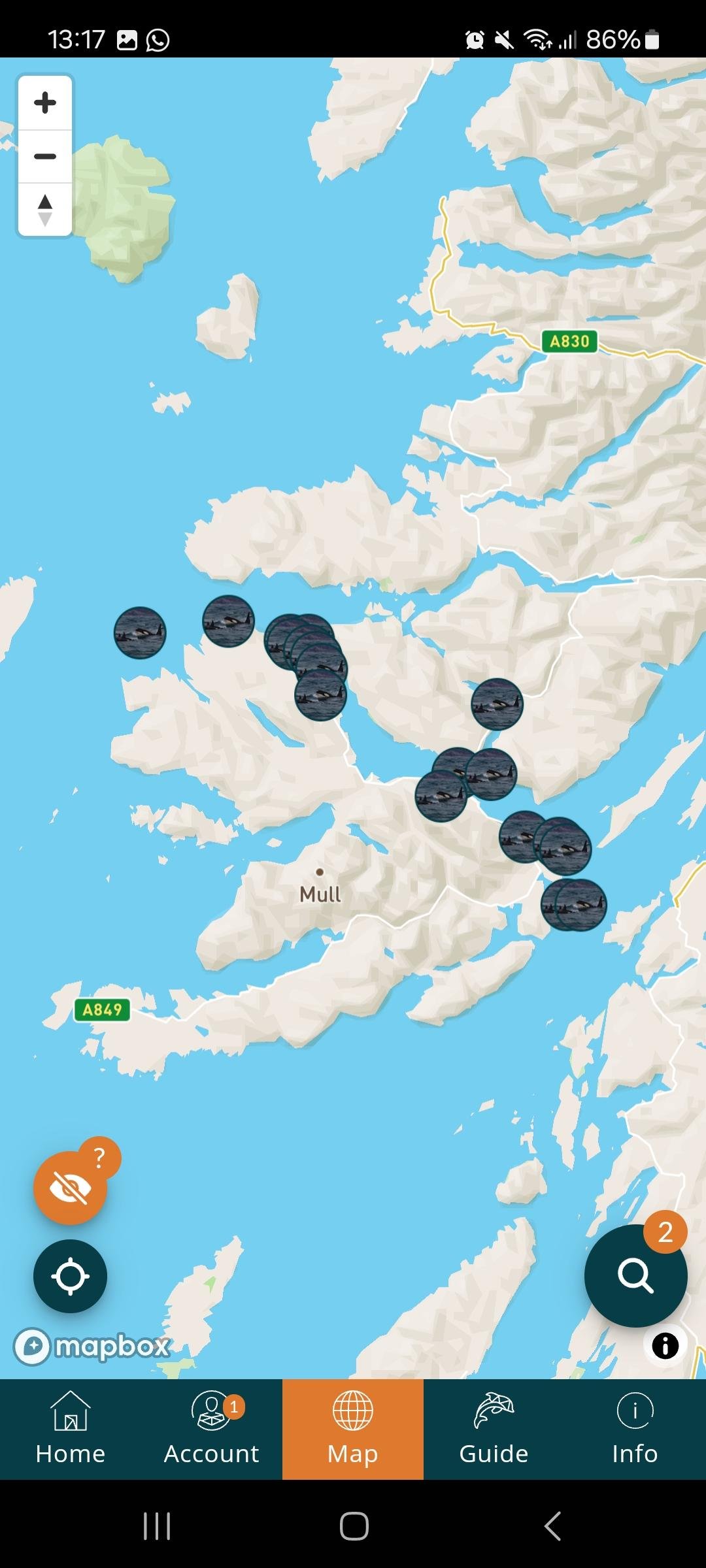A Record-Breaking Wet Summer: Whale Track Summary
©Logan Gibson
Our dedicated Whale Track community have continued to watch from land, record their excursions at sea and report their sightings through the record-breaking wet weather this summer. We cannot thank you enough for the commitment you have shown, and we are excited to share some of your highlights here.
“Summer 2024 has been so wet it’s a record breaker - even though some parts of the country have bucked the trend. It was the wettest ever summer in parts of the West Highlands, with other western areas recording a summer wet enough to make it into their top three.”
The impact of the wet summer season can be seen in some of the statistics, with a significant drop in sightings reported, compared to summer 2023 figures. Still, an incredible 604 reporters have been active, clocking up an impressive:
- 96 land-based surveys,
- recording 531 excursions,
- recording 2621 casual reports,
- submitting 249 photographs.
Combined, this totalled 4885 sightings of 29,724 animals from 14 species.
2024 summer’s top 3 sighted species remains the same as summer 2023 with common dolphins, harbour porpoise and minke whale taking the top spots. Common dolphins came in at number 1 moving from fourth position during spring to the most sighted species in summer (1,639 sightings of 20,628 animals) taking the top spot from the harbour porpoise which has moved down to second position with 1,380 sightings of 3,090 animals, while the minke whale remains in third position with 735 sightings of 880 animals.
*This data has not been analysed or corrected for effort.
CRUISING UP THE SOUND
John Coe and Aquarius are perhaps the best known killer whale duo in the Northern Hemisphere. This status means that when sightings come through, there's usually a rush to get out and catch a glimpse of this majestic pair
On 21 July reports came in of the pair being spotted in the Firth of Lorn, not the first time they have been spotted in this location, with reports of them being seen in a similar area last year. However, this time, to many peoples surprise, the boys started travelling up through the Sound of Mull. With so many people heading out in hopes of seeing them pass and submitting their sightings through Whale Track, we have a very clear timeline of their movements through the Sound.
Sighting reports of John Coe & Aquarius submitted through Whale Track
©Ally Currie
It was a very busy week for watchers in the Sound of Mull, as just a few days after John Coe and Aquarius were reported in the Sound, a report of a fin whale (!) travelling up the Sound reached us.
With Silurian being prepared for her next trip, the crew set sail into the Sound where they were lucky enough to capture photographs of the fin whale as it passed by Tobermory. The sound of the blow echoed far and wide, with watchers at Tobermory golf course hearing it as clearly as if they were onboard with us.
Check out our Whale Track Stories blog from Lyndsey (Tobermory Bay Tours) for a first-hand account of her sightings of John Coe & Aquarius and the fin whale in the Sound of Mull.
©HWDT
SUNFISH
Sunfish are summer visitors to the Hebrides, though the seasonal movement patterns of sunfish are poorly understood, they are usually restricted to waters warmer than 10 degrees, so the winter sea temperatures here are too cold for them to be resident year-round.
Gordie Bryce, while out with Gemini Explorer, reported a sunfish during his excursion from Barra to Coll on 8 July, snapping these fantastic photographs.
©Gordie Bryce
BREACHING PORPOISE
The most you might expect to see of a harbour porpoise is the rolling tire motion of their dorsal fin breaking the surface of the water, which occasionally, might coincide with a glimpse of their beak as they propel themselves through the water. A breaching porpoise is not a common behaviour. However, Barbara from the Clyde was lucky enough to witness this incredible, rarely seen behaviour.
©Barbara Armstrong
Barbara’s video shows a small pod of harbour porpoise foraging in the Clyde and during this encounter, one harbour porpoise breaches. Usually when we see a porpoise flying through the air like this, we check to make sure there were no bottlenose dolphins present, as bottlenose are known to attack and throw harbour porpoises around. However, in this instance, Barbara did not see any other species present, and this was indeed a porpoise breaching.
SEEN A FIN? SEND IT IN! CALL FOR PHOTOGRAPHS
Did you know, HWDT have been collating photos of cetaceans and basking sharks off the west coast of Scotland since the 1990’s?
As the season comes to a close and we move into autumn, we are keen to collate as many photographs from this and past seasons as possible to build our Photo ID database. Want to find out more about photo-ID and how we can use the images to identify the individuals, check out our recently published minke whale catalogue which introduces more than 300 minke whales recorded over the past 30 years - maybe you’ll find a match or perhaps a new whale!
If you have any photographs you would like to share with us, you can submit them through the Whale Track Photo Portal or email them to sightings@hwdt.org
















